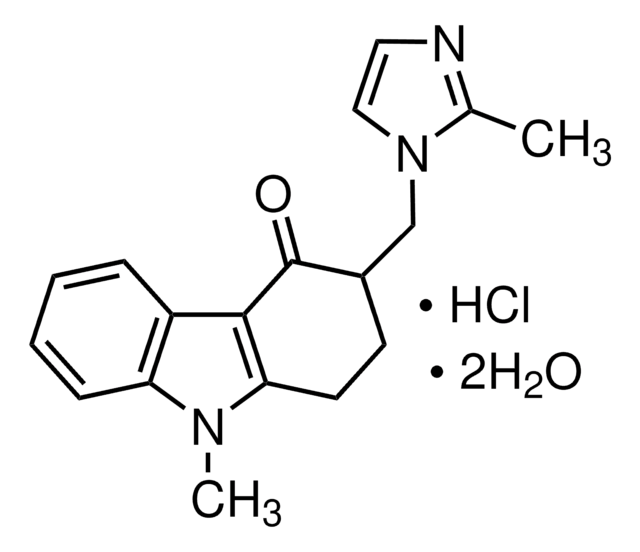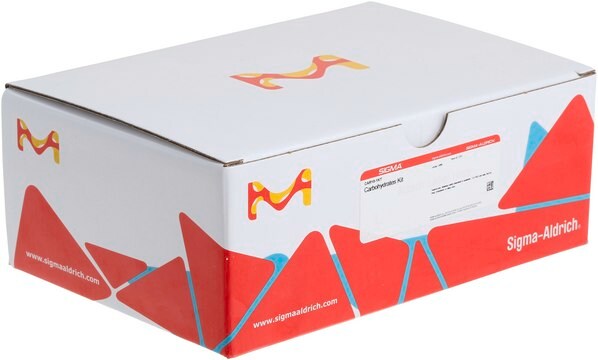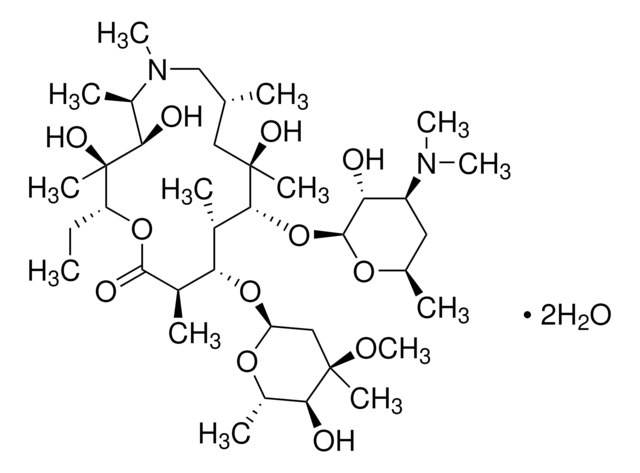89608
Galaktose-Scheiben
suitable for microbiology, Sterile filter paper discs impregnated with galactose
Synonym(e):
Carbohydrate discs
About This Item
Empfohlene Produkte
Qualitätsniveau
Sterilität
sterile
Produktlinie
BioChemika
Form
disc
Haltbarkeit
limited shelf life, expiry date on the label
Verpackung
pkg of 10 × 25 discs
Methode(n)
microbe id | utilization test: suitable
Anwendung(en)
clinical testing
environmental
food and beverages
pharmaceutical
microbiology
Lagertemp.
2-8°C
Eignung
Citrobacter spp.
Enterobacter spp.
Escherichia coli
Klebsiella spp.
Proteus spp.
Salmonella spp.
Serratia spp.
Shigella spp.
Streptococcus spp.
bacteria spp.
Allgemeine Beschreibung
Anwendung
Lagerklassenschlüssel
11 - Combustible Solids
WGK
WGK 3
Flammpunkt (°F)
Not applicable
Flammpunkt (°C)
Not applicable
Persönliche Schutzausrüstung
Eyeshields, Gloves, type N95 (US)
Choose from one of the most recent versions:
Besitzen Sie dieses Produkt bereits?
In der Dokumentenbibliothek finden Sie die Dokumentation zu den Produkten, die Sie kürzlich erworben haben.
Artikel
Sigma-Aldrich.com presents an article concerning Differentiation of Escherichia coli from coliforms.
Salmonella contamination is the second leading cause of food-borne illness worldwide. Controlling outbreaks of Salmonella is an important task for food regulators, restaurants and the food industry in general. The Salmonella family includes over 2,300 serotypes of bacteria, but two types, Salmonella enteritidis and Salmonella typhimurium, are responsible for about half of all human infections. Most outbreaks of Salmonella are traced back to dairy, poultry and meat products, but Salmonella can grow on nearly any food. Chicken, eggs and their derivative products are particularly high risk.
Unser Team von Wissenschaftlern verfügt über Erfahrung in allen Forschungsbereichen einschließlich Life Science, Materialwissenschaften, chemischer Synthese, Chromatographie, Analytik und vielen mehr..
Setzen Sie sich mit dem technischen Dienst in Verbindung.


